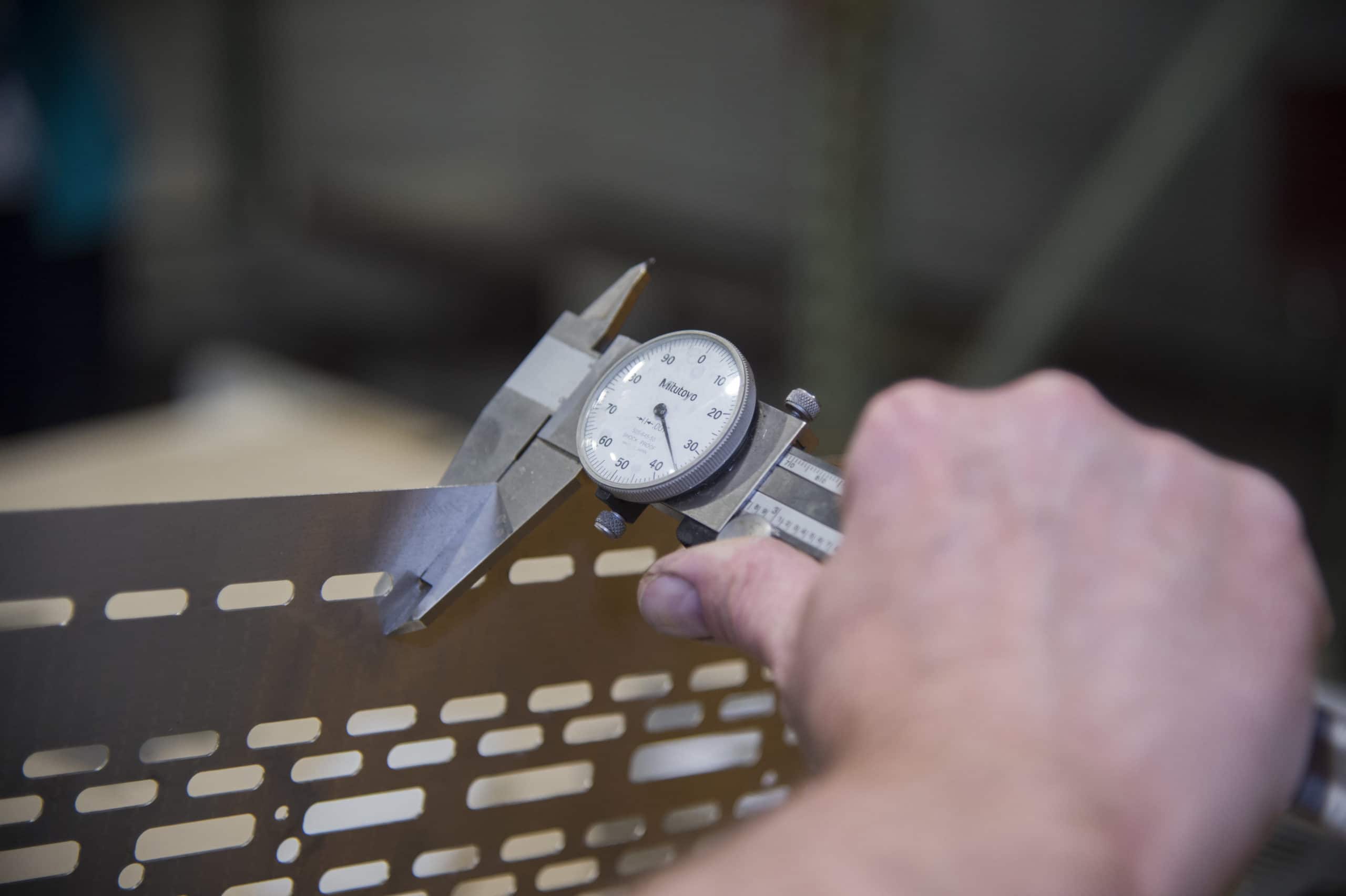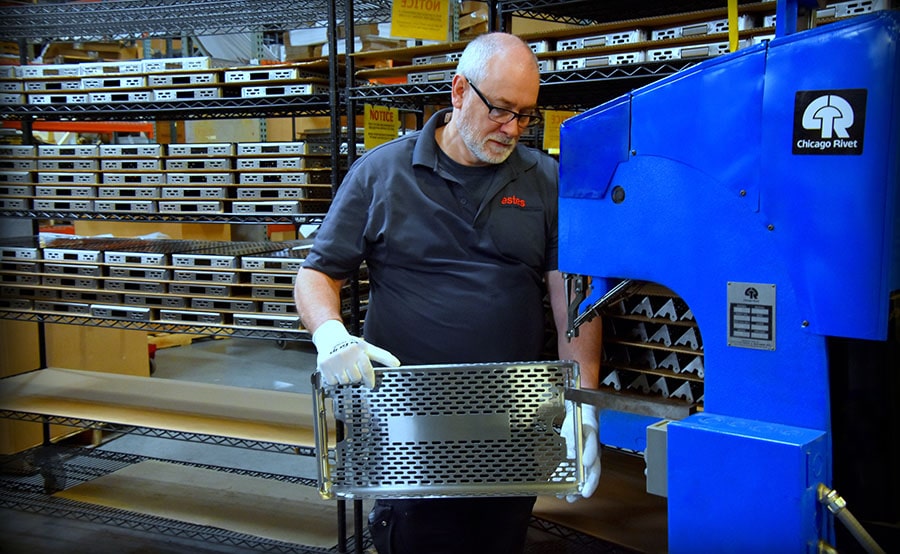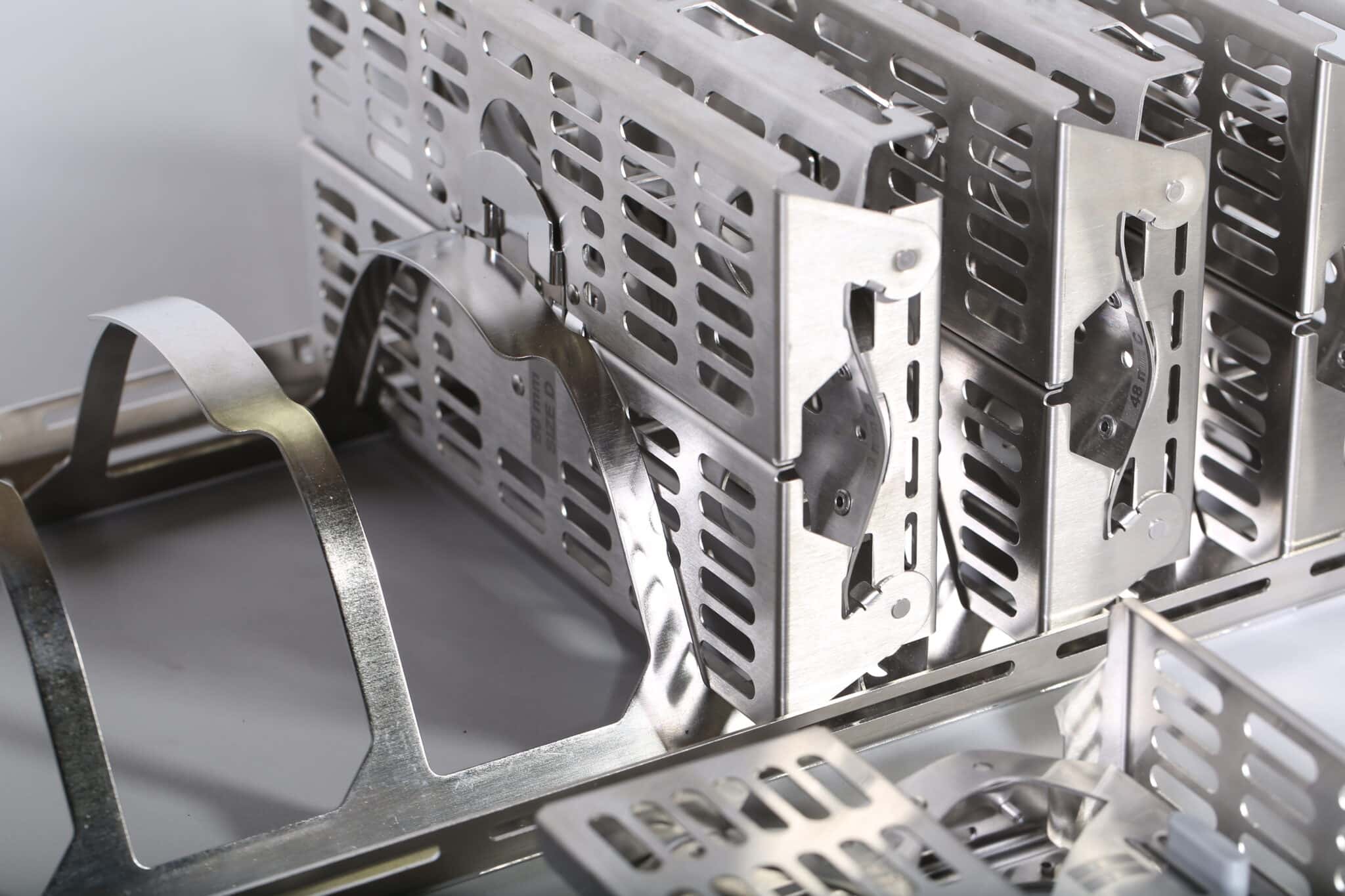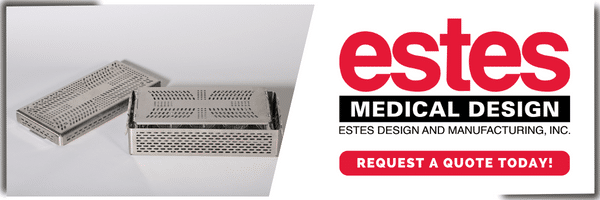While polymers and plastics have started to be more widely used in medical product designs and applications, metals and specifically sheet metal fabrication are still highly beneficial to the medical industry. Metals serve as the building blocks to many of the life-saving medical devices and equipment doctors, nurses, and patients rely on every day and still remain one of the top material choices for medical OEMs. According to a Medical Device News Magazine article, “more than 70 percent of surgical implant devices and 95 percent of orthopedic implants are made from metal due to its durability and strength.”
Here we discuss the top five benefits of using sheet metal fabrication in medical product design and innovation.
Customization Capabilities and Flexibility in Design
Medical devices and equipment typically require custom designs and complex components with unique geometry. Sheet metal is known for its malleability and ease of fabrication, making it highly suitable for the wide range of applications required for medical devices and equipment. With the right equipment, sheet metal can be bent and formed into numerous shapes, while still retaining its strength and structural integrity. Sheet metal also has the ability to be compressed or stretched without breaking or cracking. The malleability of sheet metal allows it to be effectively and efficiently used in custom, complex, or highly specialized medical applications.
In addition to the flexibility sheet metal provides medical product designers, sheet metal also provides flexibility in production runs. Simple design changes can be made from run to run without having to invest in new tooling or make a completely new mold required with plastic or other similar materials. Sheet metal also provides flexibility in finishing processes that can enhance the longevity and durability of medical devices and equipment. Passivation, anodizing, and electroplating are just a few of the finishing processes that can help create a durable and corrosion-resistant medical product.
Accuracy and Precision
Accuracy and precision are essential factors when manufacturing medical devices and equipment. Metal fabrication processes can help ensure the delivery of precise, high-quality, and best-in-class medical products. With advanced state-of-the-art technology, many metal fabrication processes can be automated, which reduces the possibility of human error while improving part accuracy, and also ensures repeatability on mass production runs. In addition to this, sheet metal prototypes allow you to test your medical product design in the real world with continuity in material, technology, and processes, ensuring that your medical device performs as expected.
advanced state-of-the-art technology, many metal fabrication processes can be automated, which reduces the possibility of human error while improving part accuracy, and also ensures repeatability on mass production runs. In addition to this, sheet metal prototypes allow you to test your medical product design in the real world with continuity in material, technology, and processes, ensuring that your medical device performs as expected.
Strength/Durability
Sheet metal is strong and durable, and sheet metal parts are often able to withstand greater pressure and heat than those made with other materials. In general, sheet metal has proven to be a superior material choice for medical product designs because of its resistance to chipping, scratching and cracking. Even with heavy usage causing minor scratches, the integrity of the sheet metal part is not compromised. In addition to this, sheet metal’s strength and durability can help reduce risk of product failure, which is critical to medical product design and manufacturing.
Corrosion Resistant and Hygienic
Medical environments rely on clean and sanitary environments, and in addition to the strength and durability of sheet metal, aluminum, stainless steel, or surface-treated steel are all resistant to pressure and corrosion. Specifically, stainless steel materials are highly resistant to corrosion because of their increased nickel/chromium  content and are therefore better able to withstand the sterilization processes required of medical devices and equipment. The hard metallic nature of sheet metal and specifically stainless steel makes it extremely difficult for bacteria, mold, or other microorganisms to survive and cause disease. The thermal properties of sheet metal also aid in this as water from the sterilization process quickly evaporates. So, devices made from sheet metal don’t retain moisture and in return don’t accumulate bacteria.
content and are therefore better able to withstand the sterilization processes required of medical devices and equipment. The hard metallic nature of sheet metal and specifically stainless steel makes it extremely difficult for bacteria, mold, or other microorganisms to survive and cause disease. The thermal properties of sheet metal also aid in this as water from the sterilization process quickly evaporates. So, devices made from sheet metal don’t retain moisture and in return don’t accumulate bacteria.
Cost Effective
When the total life cycle costs of sheet metal parts are considered, they often result in the least expensive option for many of the reasons discussed above. Many companies move from cast or molded parts to sheet metal because of the overall reduction in costs and material waste. Material lifespan and longevity must also be considered when evaluating the cost of material. The cheapest material is not necessarily the most cost-efficient option if it will not serve you well for a long period of time and has to be consistently replaced or maintained. Other material choices will need consistent repairs and require routine maintenance. However, the strength and durability features of sheet metal make it a more cost-effective option. In addition to this, tooling costs for other manufacturing processes like CNC machining or plastic molding can be very expensive, also making sheet metal a more economical choice.
Estes Design and the Medical Industry
From sterilization cases and trays to medical prototypes, components, and weldments, Estes brings medical design innovation and fabricating automation to the medical industry. Estes has worked with top medical manufacturers to develop high quality fabricated medical products that cost-effectively combine form with function. If you are looking for a prototype team or manufacturer to help with your medical product design, contact us to learn how Estes Medical Design and our innovative approach can help make your project come to life. Backed by our engineering staff and state of the art manufacturing facility, we stand ready to assist in your medical device design and manufacturing projects!









